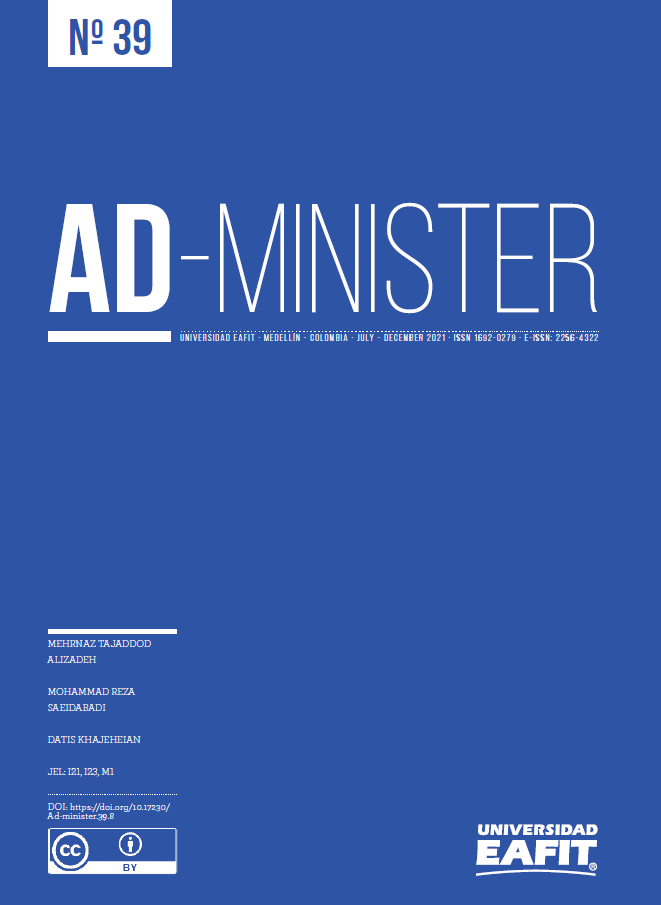How to compose a media mix to win an electoral campaign? proposing a framework for political marketing
Main Article Content
Keywords
Election, Electoral campaigns, Political marketing, Media management, Political communication
Abstract
This article addresses the issue of composing different media to send an integrated message to the voters in electoral campaigns and presents a framework for managing media in political marketing. The authors conducted deep interviews with strategy developers of the past presidential elections as well as two parliamentary elections in Iran to extract the strategy development process for delivering the campaign message to the target audiences. thematic analysis used for analysis of data and interviews coded in three levels of open, axial and selective. The paper suggests a sequence of audience, message and media to launch a successful campaign within a framework that starts with campaign structure and strategy and accomplished with economic effectiveness measuring and success rate.
Downloads
References
Ansolabehere, S., & Iyengar, S. (1995). Going negative (Vol. 95). Free Press.
Bartels, L. M. (1996). Uninformed Votes: Information Effects in Presidential Elections. American Journal of Political Science, 40(1). https://doi.org/10.2307/2111700
Best, V., Ozmeral, E. J., Kopčo, N., & Shinn-Cunningham, B. G. (2008). Object continuity enhances selective auditory attention. Proceedings of the National Academy of Sciences of the United States of America, 105(35). https://doi.org/10.1073/pnas.0803718105
Capizzo, L., & Regina, L. W. (2019). Public relations campaigns: an integrated approach. Crosbie, V. (2018). The Rise of Individuated Media. The Rethinking Theories and Concepts of Mediated Communications Conference.
Cwalina, W., Falkowski, A., & Newman, B. I. (2015). Political marketing: Theoretical and strategic foundations. In Political Marketing: Theoretical and Strategic Foundations. https://doi.org/10.4324/9781315701684
Delli Carpini, M. X., & Williams, B. A. (2020). Campaigns and Elections in a Changing Media Landscape. In The Oxford Handbook of Electoral Persuasion. https://doi.org/10.1093/oxfordhb/9780190860806.013.16
Doyle, G. (2013). New Media. In Understanding Media Economics. SAGE Publications Ltd. https://doi. org/10.4135/9781446279960.n8
Ediraras, D. T., Rahayu, D. A., Natalina, A., & Widya, W. (2013). Political Marketing Strategy of Jakarta Governor Election in the 2012s. Procedia - Social and Behavioral Sciences, 81. https://doi.org/10.1016/j. sbspro.2013.06.480
Elchahabi, S., & Gallagher, A. (2015). The Evolving Role of Media in Elections. International Foundation of Electoral Systems: Https://Www.Ifes.Org/News/Evolving-Role-Media-Elections.
Falkowski, A., & Cwalina, W. (2012). Political Marketing: Structural Models of Advertising Influence and Voter Behavior. Journal of Political Marketing, 11(1–2). https://doi.org/10.1080/15377857.2012.642705
Friedrichsen, M., Zarea, H., Tayebi, A., & Saeed Abad, F. A. (2017). Competitive strategies of knowledge and innovation commercialization: a unified swot and fuzzy ahp approach. AD-Minister. https://doi. org/10.17230/ad-minister.30.3
Hajipoor, B., Hoseini, S. M., & Zare, S. (2016). Designing A Model Of Political Marketing For Local Elections. Journal Of Public Administration Perspective, (27 #A00178), 15–39. Https://Www.Sid.Ir/En/Journal/ Viewpaper.Aspx?Id=596945
Henneberg, S. C., & O’shaughnessy, N. J. (2007). Theory and Concept Development in Political Marketing. Journal of Political Marketing, 6(2–3), 5–31. https://doi.org/10.1300/J199v06n02_02
Hossain, S. F. A. (2019). Social networking and its role in media entrepreneurship: Evaluating the use of mobile phones in the context of online shopping–A review. Journal of Media Management and Entrepreneurship ….
Khajeheian, D. (2011). Remediation of Media Markets toward Media Entrepreneurship, how recession reconstructed media industry. European Media Management Education Association Conference, Moscow.
Khajeheian, D, Esmaeilkhoo, H., & Yousefikhah, S. (2012). Information technology and media convergence: An entrepreneurial approach towards media matrix management. African Journal of Business Management, 6(29). https://doi.org/10.5897/ajbm11.563
Khajeheian, D. (2019). Qualitative methods in media entrepreneurship research: Clarification of the terms framework, model and pattern. AD-Minister, 34.
Kotler, P., & Keller, K. L. (2012). Marketing management. Pearson Education International, 817. Lilekis, J. (2006). Just because it’s unauthorized doesn’t mean you won’t do it. Mobile Press- Register.
Luttrell, R., & Capizzo, L. W. (2019). Public relations campaigns : an integrated approach.
Marcus, G. E., & MacKuen, M. B. (1993). Anxiety, Enthusiasm, and the Vote: The Emotional Underpinnings of Learning and Involvement During Presidential Campaigns. American Political Science Review, 87(3). https://doi.org/10.2307/2938743
Newman, B. I., & Sheth, J. N. (1985). A Model of Primary Voter Behavior. Journal of Consumer Research, 12(2). https://doi.org/10.1086/208506
O’Shaughnessy, N. (2009). Selling Hitler: Propaganda and the Nazi brand. In Journal of Public Affairs (Vol. 9, Issue 1). https://doi.org/10.1002/pa.312
Owen, Diana. (2018). Trump supporters’ use of social media and political engagement. The Annual Meeting of the American Political Science Association.
Popkin, S. L., & Kinsey, D. (1991). The Reasoning Voter: Communication and Persuasion in Presidential Campaigns. In Political Psychology (2d edition, Issue 3). Chicago: University of Chicago Press. https://doi. org/10.2307/3791718
Semetko, H. A., & Tworzecki, H. (2017). Campaign strategies, media, and voters The fourth era of political communication. In H. A. Semetko & H. Tworzecki (Eds.), The Routledge Handbook of Elections, Voting Behaviorand Public Opinion.
Routledge. Su, Z., & Zarea, H. (2020). Policy for Fostering Entrepreneurship and Innovation in Creative Industries. Nordic Journal of Media Management, 1(4), 583–588. https://doi.org/10.5278/njmm.2597-0445.6326
Warren, M. E. (2011). Voting with your feet: Exit-based empowerment in democratic theory. American Political Science Review, 105(4). https://doi.org/10.1017/S0003055411000323
Wring, D. (1997). Reconciling marketing with political science: Theories of political marketing. Journal of Marketing Management, 13(7). https://doi.org/10.1080/0267257X.1997.9964502
Zaller, J. R. (1992). The Nature and Origins of Mass Opinion. In The Nature and Origins of Mass Opinion. https://doi.org/10.1017/cbo9780511818691
Zaller, J. R. (1996). The Myth of Massive Media Impact Revived: New Support for a Discredited Idea. In Political Persuasion and Attitude Change.
Zareie, A. Z., Sharafi, V., & Bahmani, M. (2016). The Effect of Integrated Political Marketing Communications and Social Media on the Selection of Candidates in the Tenth Parliament Election. Research Letter of Political Science, 11(4), 97–124. http://www.ipsajournal.ir/article_304.html


